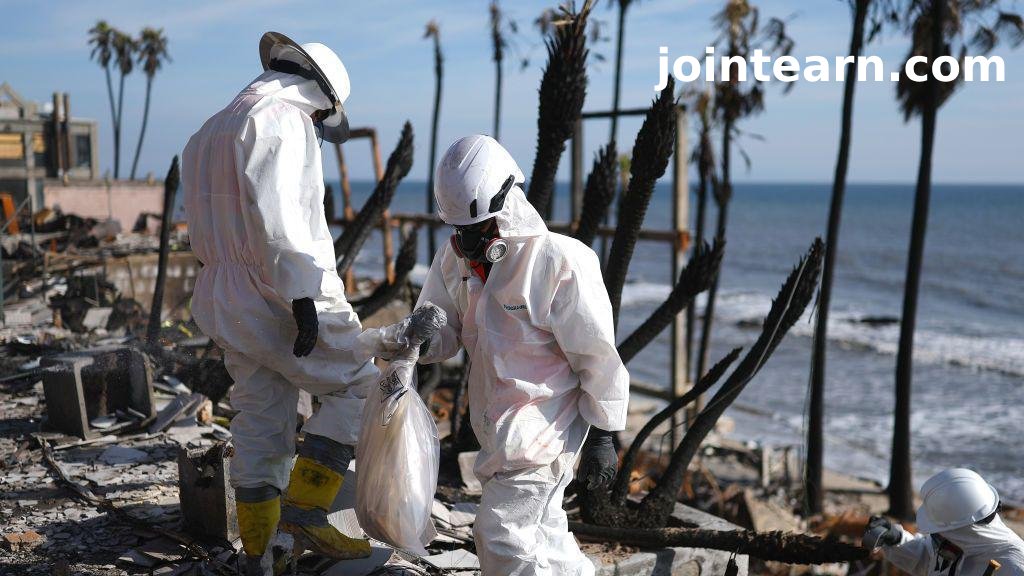Will Rogers State Beach, famous for its golden sands, lifeguard towers, and iconic “Baywatch” scenes, has long symbolized California’s coastal allure. However, in the wake of the devastating Palisades and Eaton wildfires, the beach now tells a starkly different story.
A Beach Transformed by Disaster
Surrounded by the charred remains of homes and palm trees, Will Rogers State Beach has become a hazardous waste sorting site. Environmental Protection Agency (EPA) crews in hazmat suits replace the usual surfers and sunbathers, working tirelessly to remove toxic debris, including melted electric vehicle batteries. The scale of destruction is staggering—official estimates place the debris at 4.5 million tonnes, surpassing the 400,000 tonnes left behind by the 2023 Maui wildfires.
Accelerated Cleanup Sparks Concern
Following an executive order from President Donald Trump to expedite hazardous waste removal, the EPA aims to complete its work by February 25—significantly faster than the three-month cleanup timeline in Maui. However, concerns are mounting about the potential risks of this rapid process, particularly regarding the safety of the ocean water for swimmers and surfers.
Protests Over Coastal Hazardous Waste Sorting
Environmental activists, including actress and sustainability advocate Bonnie Wright, have expressed strong opposition to the EPA’s choice of sorting sites near the shoreline. Although activists successfully pressured the EPA to relocate burned EV batteries away from the sensitive Topanga Creek watershed, Wright argues that placing hazardous waste so close to the beach is a step backward for environmental safety.
Lithium-Ion Batteries Pose Ongoing Threat
EPA incident commander Steve Calanog warns that burned lithium-ion batteries present a unique danger, capable of reigniting and exploding weeks or even months after exposure to extreme heat. Comparing them to “unexploded ordnance,” he emphasizes the urgency of swift cleanup efforts to minimize contamination risks to the ocean and surrounding environment.
Water Quality: Is It Safe to Swim?
In January, Los Angeles County closed a nine-mile stretch of coastline due to concerns over toxic runoff. Although most beaches have reopened, officials continue to advise against entering the water near burn sites. Initial water quality tests yielded better-than-expected results, but scientists remain cautious, warning that conclusive toxicity reports could take up to six weeks.
Organizations like Heal the Bay and the Surfrider Foundation are closely monitoring pollution levels, but many locals remain skeptical. Chad White, a lifelong surfer from the Palisades, says he has no desire to return to the ocean just yet. “It’s not just the water quality—it’s the devastation. My friends lost their homes, and our beautiful coastline has turned into a toxic waste dump.”
California’s Coastal Legacy in Jeopardy
Will Rogers State Beach, once a vibrant emblem of the California dream, now stands as a reminder of nature’s destructive power and the urgent need for responsible environmental management. As cleanup efforts continue, the fate of this iconic beach—and the safety of those who cherish it—remains uncertain.
For ongoing updates on the environmental impact and recovery efforts, stay tuned.












